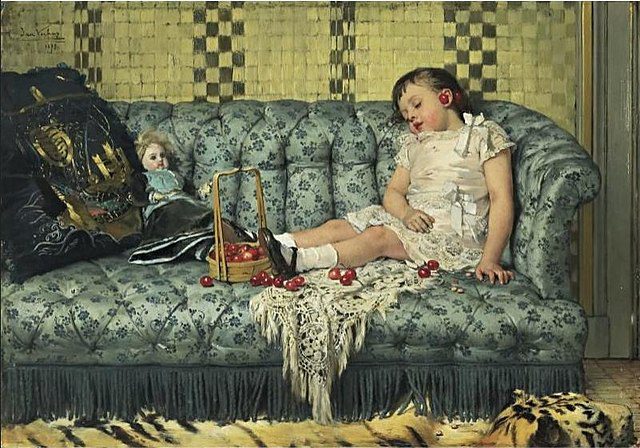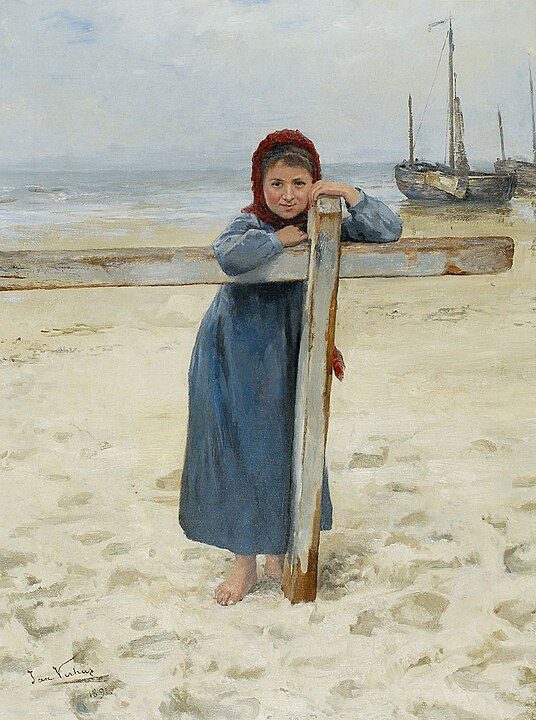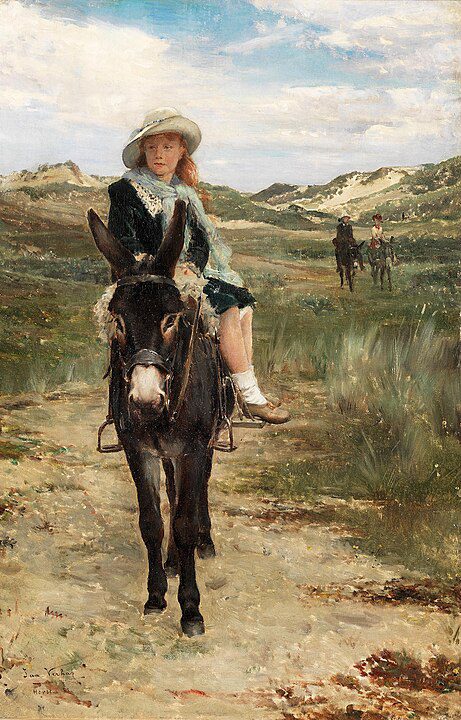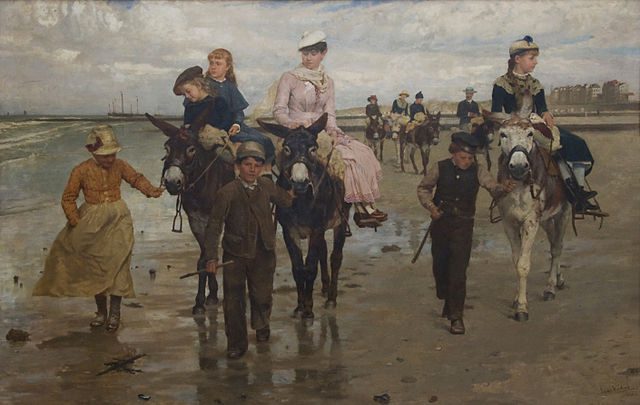
Jan Frans Verhas was born on January 9, 1834, in Dendermonde, a quaint town in the East Flanders province of Belgium. The Verhas family was steeped in artistic tradition, with Jan’s father, Emmanuel Verhas, being a painter and his brother, Frans Verhas, also pursuing a career in the arts. This familial influence played a crucial role in shaping Jan’s future endeavors in the world of painting.
Jan Verhas demonstrated an early talent for drawing and painting, which led him to formal training at the Academy of Fine Arts in Dendermonde. His artistic journey continued at the prestigious Royal Academy of Fine Arts in Antwerp, where he studied under the tutelage of Nicaise De Keyser, a prominent figure in the Belgian Romantic school of painting. De Keyser’s influence was significant, imparting to Verhas the techniques and sensibilities that would become hallmarks of his style.
After his time in Antwerp, Verhas traveled to Paris to further hone his skills. The French capital, with its vibrant art scene and access to the works of great masters, provided Verhas with a broader perspective on art and technique. He was particularly drawn to the works of Jean-François Millet and Gustave Courbet, whose realist approach deeply influenced him.
Major Themes and Styles
Verhas is best known for his genre paintings, which often depicted scenes from everyday life with a focus on the innocence and charm of childhood. His works are characterized by meticulous attention to detail, vibrant colors, and a keen sense of composition. One of his most notable pieces, “The Village School,” exemplifies his ability to capture the simplicity and joy of rural life.

In addition to genre scenes, Verhas also painted portraits and historical subjects. His portraits, often of children and women, are celebrated for their realism and the delicate portrayal of his subjects’ emotions and personalities. Historical scenes allowed Verhas to explore more complex compositions and narratives, demonstrating his versatility as an artist.
Key Works and Achievements
“The Village School” is perhaps Jan Verhas’s most famous work. It depicts a lively classroom scene in a rural village, with children engaged in various activities and their teacher at the center of the composition. The painting is lauded for its vibrant depiction of childhood and its meticulous detail, capturing the textures of clothing, the expressions of the children, and the rustic charm of the schoolroom.

In “The Lion of Flanders,” Verhas pays homage to the Flemish struggle for independence. The work is grand in scale and rich in detail, portraying a dramatic scene from the medieval period. The painting reflects Verhas’s ability to handle large compositions and complex historical narratives with finesse.
Verhas’s portraits of children, such as “Little Girl with a Straw Hat” and “Portrait of a Boy,” showcase his skill in capturing the delicate features and innocent expressions of his young subjects. His portraits are noted for their lifelike quality and the subtle interplay of light and shadow, which bring his subjects to life.
Recognition and Influence
Jan Verhas’s work gained considerable recognition during his lifetime. He exhibited regularly at the Brussels Salon and other prestigious venues, earning numerous accolades for his contributions to Belgian art. His paintings were admired not only for their technical excellence but also for their ability to evoke a sense of nostalgia and charm.
Verhas was a member of several art societies, including the Royal Academy of Science, Letters and Fine Arts of Belgium. His influence extended beyond his own work, inspiring a generation of Belgian artists to explore genre painting and the depiction of everyday life.

In his later years, Jan Verhas continued to paint, although his output slowed due to health issues. He remained a respected figure in the Belgian art community until his death on October 31, 1896. His passing marked the end of an era for Belgian genre painting, but his legacy lived on through his works and the artists he influenced.
Today, Jan Verhas is remembered as one of Belgium’s foremost genre painters. His paintings are held in high regard and can be found in major museums and private collections around the world. The charm and technical brilliance of his work continue to captivate audiences, ensuring his place in the annals of art history.
Personal Life and Character
Despite his professional success, Jan Verhas was known to be a modest and reserved individual. He preferred the quiet life of his hometown to the bustling art scene of larger cities. This connection to his roots is evident in his work, which often reflects the simplicity and beauty of rural Belgian life.
Verhas never married, dedicating his life to his art and his family. He maintained a close relationship with his brother Frans, with whom he shared a studio for many years. This familial bond provided a source of support and inspiration throughout his career.
Jan Verhas’s contribution to Belgian art is undeniable. Through his genre scenes, portraits, and historical paintings, he captured the essence of 19th-century life with a unique blend of realism and charm. His attention to detail, vibrant use of color, and ability to convey emotion make his work timeless.

For art enthusiasts and historians, Verhas’s paintings offer a window into the past, providing insight into the daily lives and experiences of people from a bygone era. His legacy continues to be celebrated, ensuring that his contributions to the world of art are never forgotten. Whether through the innocent gaze of a child or the dramatic retelling of history, Jan Verhas’s art remains a testament to his talent and vision.




